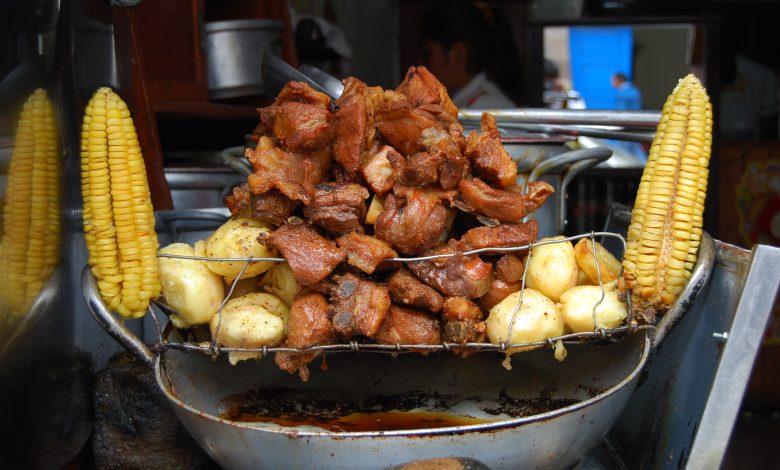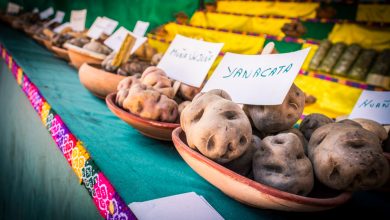Peruvian Cuisine, Cultural Patrimony of the Americas.

Peru´s cuisine was honored Wednesday night, March 23, 2011, by the Organization of American States. José Miguel Insulza, Sectretary General of the OAS, gave Peru´s cooking the first ever “Cultural Patrimony of the Americas Award” at a gala dinner in the organization’s Hall of the Americas in Washington D.C. as two important socioeconomic rivers joined in a rush.
Guests, which included diplomats and dignataries, enjoyed symbolically significant examples of Peruvian gastronomy at the dinner following the ceremony where Eduardo Ferreyros, Perú’s Minister of Foreign Trade and Tourism, received the trophy tangibly representing the award.
Dishes included, according to El Comerico (Peru´s leading daily), appetizers–sole tiraditos, crab causitas, lomo saltado rolls, and fried yuquitas in hunacaína sauce, main dishes–sole in yellow ají sauce with glazed sweet potatoes and kernals of fresh corn, mutton rack scented with cilantro, as well as a prawn chupe, and deserts which included manjar de yema, chirimoya fruit with pisco and orange, alfajorcitos, guarberitos, and maná fruits with traditional Peruvian coffee.
Minister Ferreyros captured one of the twined streams of political and economic organization when he held that Peru´s cuisine has become a globally recognized brand.
From its agricultural products to the food offered in its restaurants, both are means of knowing Perú and the Peruvians. We are speaking about a brand; Peruvian food is now a brand because of the dreams of those visionaries that said we had to promote Peruvian gastronomy.”

Efforts to brand Peruvian cuisine continue in a push to obtain recognition from UNESCO naming Perús gastronomy as “Intangible Cultural Heritage of Humanity.” This action comes together in a slogan “Peruvian Cooking for the World” marking both a campaign for national development as well as improving Perú’s place in an international market of exports and tourism.
Not only are Peruvian restaurants popping up like crocuses in spring all over the world, the formal food market is also expanding within the country where new developments of Peruvian cuisine appear on street after street.
Secretary Insulza captured this dual growth when he said, while presenting the award to Minister Ferreyros:
Peruvian cuisine has broken its traditional limits and has become a marvelous attraction for that beautiful country at the same time it represents its cultural heritage.
The food industry in Peru directly or indirectly involves some twenty percent of its economically active population, around five million people, and the number of restaurants in the country grew forty-five percent between 2000 and 2009. This includes the massive growth of restaurants in Cuzco and the increase in novo-Andean cuisine and fusion cuisine among them.
This first ever award from the Organization of American States is part of an OAS campaign which simultaneously declared 2011 the “Inter American Year of Culture in the Americas.”
Secretary General Insulza held this declaration
is evidence that the Member States recognize the profile of culture as an essential element in the economy, in diplomacy, in social inclusion and in the construction of peace” that requires countries “assume the political and financial commitment of betting on culture and investing in a diverse but integrated future, a culture connected to its roots but also innovative and, above all, paraphrasing Mario Benedetti, one that defends the joy of being who we are.
As a result, the push by Peruvian elites and government to brand their cuisine and bring it international recognition coordinates nicely with the desired inter-American effort of the Organization of American States. It stands as a representative of what Secretary General Insulza would like other countries to accomplish as they reorder their cultural lives in market terms.
One of the visionaries mentioned by Minister Ferreyros, Bernardo Roca Rey, now Vice Minister of the new Ministry of Culture, grasped this when he spoke to the OAS in a presenttion entitled “The Ministry of Culture of Peru as a Vector of Development”:
It can be asserted that human development is not possible without the cultural dimension, which encompasses precisely the attributes that make us most human—intelligence, values, beauty, creativity, and life in community.
Culture, in this case food, is now open for economic promotion and development. This cannot help but change the way food is created and consumed within Peru and the Americas at the same time it fills people with justifiable national pride.




